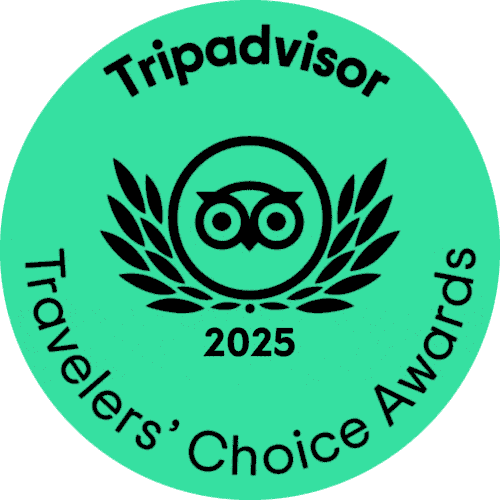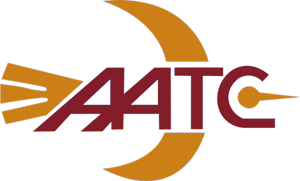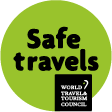Handle to the migration authority the International Boarding pass in the airport o in the migration post on the zone of the border. Keep it because you will need to return it when you leave your country. In the case it gets lost, you will need to pay a penalty equivalent to 12 nuevos soles.
The migration authority will give you a format to declare about the goods subject to taxes. This does not include articles such as personal clothes, laptops and adventure sports gear.
If you are planning to travel to the rain forest, it is advisable to get the vaccine against yellow fever at least ten days in advance. Places in Lima where you can get the vaccines:
Jorge Chavez International Airport.
Phone: (01) 575-1745 Monday to Sunday, 24 hours a day.
International Vaccine Center.
Calle Capac Yupanqui 1400 Lima 1.
Phone: (01) 471 – 9920, extensión 1215.
Monday to Friday 8 am to 6 pm.
It is totally forbidden to photograph airports, military areas, electric areas and police stations. In some churches and museums pictures and filming are not allowed. Inform yourself beforehand.
Just drink bottled water or previously boiled. Be careful with raw fruits and vegetables Avoid eating outdoors.
In case of high altitude headache is advisable to rest the frist day you arrive to the highlands and eating light meals. You should drink "mate de coca" (coca tea). If you travel to the highlands or the jungle, be sure to take repellent against insects and waterproof clothes.
For medical attention, contact personnel from your hotel or travel agent. If you want to buy an insurance, contact your preferred travel agency.
You can make international and national calls from public phones. The country codes and cities can be found in the majority of public phones.
To make an international call:
00 + country code + city code + phone number
To make domestic calls:
0 + city code + phone number
Public phones accept coins and cards that are sold on newsstands and supermarkets. Verify you are getting a card from the company you want.
Information on telephone numbers: dial 103
The main cities in Peru have internet public areas. The average rate per hour is U$1,30
Air
There are flights and connections from Lima to the different cities in Peru, except Ica, where you can get by land using buses. Always make the reservations in advance.
Airport Tax (T.U.U.A)
Domestic Flights : US$ 6.82
International Flights: US$ 31.00
The payment is done before boarding.
By land
Buses within Peru.
The bus services in Peru covers all destinations, except some places in the rain forest. Ask about the different facilities depending on the fare paid and the service non stop.
Taxis and public transport
It is advisable take taxis from a safe company or those that are authorized by the city hall (in Lima those taxis are painted yellow).
The price needs to be negotiated before getting to the destination. Ask where you are about the fares. It is not a custom to give tips to the drivers.
At the airports it is advisable to hire the taxis authorized by the company.
The city buses (the cheapest choice) have different colours and numbers assigned to specific routes. Most of them have long routes and many times it is uncomfortable. Ask before taking one. Do not take them late at night.
e-mail : This e-mail address is being protected from spambots. You need JavaScript enabled to view it
By train
The touristic train service covers the following routes:
Puno – Cusco
Cusco – Ollantaytambo – Machu Picchu
Information: Peru Rail
Av Armendariz 397, Miraflores Lima/Tel (01)444-50250/444-5025
Opened from Monday to Friday (8:30am to 6:00pm)
e-mail :
Shopping
You can go shopping to department stores and street markets and stores that are opened every day (including holidays) between 9:00 and 20:00.
On the streets you can bargain.
Some animal and plant species are protected by law in Peru.
The law in Peru prohibits the transportation and export of many animals, dead or alive without an authorization from INRENA (National Institute of Natural Resources for its initials in Spanish).
e-mail:
BANKS
They are normally opened from Monday to Friday (9:00 to 18:00). Most banks are opened on Saturdays. There are ATM on the main cities and main avenues from different banks.
Money exchange
It is advisable to change currency in the hotels, banks or stores (opened from 9:30 to 18:00 approximately). On Saturdays, most banks are opened until noon. The money exchange depends on the place. To check the exchange rate visit:
www.editoraperu.com
www.expedia.msn.com
Night life
Most cities have a wide variety of night life. If you want to enjoy typical dances and music from Peru, you can visit places called "peñas". In Lima, discotecs, bars and night clubs are in Miraflores, San Isidro and Barranco. In other cities they are around the main square.
Tips
In Peru tipping is variable and depends if you are satisfied according to the service you bring.

With an area of 1'285,215 square km (496,225 sq mi), Peru is bigger than France, Germany, Italy, Netherland and Switzerland combined. It is the third largest country in South America and bordered to the north by Ecuador and Colombia, to the east by Brazil and Bolivia, to the south by Chile and to the west by the waters of the Pacific Ocean.
We are taught as early as kindergarden that the country is divided in 3 geographic regions: the coast, highlands and the jungle.
Coast (12% of the territory): a warm climate along the coastline that includes superb natural beaches, mysterious deserts, fertile river valleys and exotic dry woods.
Highlands (28% of the territory): a region of varied terrain and temperate climate, dominated by the snow-capped peaks of the Andes rising above 6,000 meters, the highest of which is Mount Huascaran, at 6,768 meters (22,206 feet). It includes deep canyons such as the Colca and Cotahuasi, the two deepest on the planet; and high plains like the plateau of Collao, on the shores of the world's highest navigable lake, Titicaca, at 3,810 masl (12,500 feet).
Jungle or Amazonia (60% of the territory): a region of tropical climate, lush vegetation and abundant fauna that is part of one of the planet's largest natural reserves. Peruvian Amazonia is the source of the Amazon River, the largest in the world.
Climate
Temperatures and atmospheric cycles vary from one region to another.
Coast: There are two clearly-defined seasons on the coast: summer (December-March), when temperatures can reach 27ºC (80ºF); and winter (May-October), which is damp and chilly, with temperatures falling to 12ºC (53ºF). Although it rarely rains on the coast, mist and drizzle are common during the winter. The far north coast enjoys sunshine all year round, with temperatures reaching 35ºC (95ºF) in the summer.
Highlands: The climate is dry and temperate, with two clearly-defined seasons: the dry season (May-October), with sunny days, very cold nights and scant rainfall -the ideal time to visit the Andes; and the rain season (December-March). There is a sharp contrast in temperature between sun and shade, and temperatures can often vary widely during the same day, from 20ºC (68ºF) to 2ºC (35ºF).
Jungle: The area has a tropical and humid climate. There are two well-defined seasons: the summer or dry season (April to October) with sunny days and temperatures above 30ºC (86ºF), and the rain season (November to March), with frequent showers and high river levels.
Information on weather conditions in Peru is available on the Internet:
-https://www.senamhi.gob.pe
- https://www.weather.com
The Peruvian often use superlatives to describe the features of our country, for example Lake Titicaca, the world's highest navigable lake at 3856 meters (12,725 ft) above sea level or the awesome Cordillera Blanca, which is about 180 km (112 miles) long and 20 km (12 miles) wide. In this fairly small area, there are more than 50 peaks of 5700 meters (18,696 ft) or higher.
In contrast, North America has only three mountains in excess of 5700 meters: Pico de Orizaba in Mexico, Logan in Canada, Denali in Alaska and Europe has none. Only in Asia can you find mountain ranges higher that the Andes.

Huascaran, at 6,768 meters (22,199 ft), not only is Peru's highest mountain, but also the highest peak in the tropics anywhere in the world.
The Amazon river, the world's mightiest, originates in Peru and its namesake rainforest makes up much of the country.
Another wonder of Peru is the Colca's canyon, the globe's deepest and twice as deep as the Grand canyon of the United States.
As if these were not enough, Caral, located north of Lima, has the privilege of being the oldest city of the Western hemisphere. It has been proven with carbon 14 dating that this settment was inhabited 2900 years B.C.

In 2008 Peru has a population 28'220,764 habitants according to TIME ALMANAC. The coast is home to 52% of the total population, while 36% live in the highlands and 12% in the jungle.
The population is predominantly mestizo or racially mixed, and most speak Spanish, although there are two important minorities: the Quechua and Aymara, and the native population of Amazonia, which is subdivided into 14 linguistic families and 42 ethnic groups.
Perú is politically divided into 25 regions:
Lima is Perú´s Capital.
As well as the capital, Metropolitan Lima, which has no regional status.
Peru is a democracy whose public powers are the Executive, headed by the President of the Republic; the Legislature, which is a one-chamber congress; and the Judiciary. General elections, to elect a President of the Republic and the representatives to Congress, are held every five years. Regional and municipal elections are held every four years.
Peru is one of the great originating centers of ancient culture, along with Mexico, Mesopotamia, India, and China. Paleolithic man left his first traces here and began to develop villages of hunters-collectors around 6,000 BC (as seen in Lauricocha, Huanuco). Farming settlements began to form around 2,500 BC, growing manioc, lima beans, quinoa, potatoes, cotton and maize.
Prior to the arrival of the Conquistadors from Europe, Peruvian history is divided into five stages or horizons:
Early Horizon (1200 BC - 200 BC): Small states were formed, with the elite holding economic and religious power. Chavin de Huantar (Ancash) belongs to this stage, with its temple of underground passages that include monochromatic pottery and megalithic art. Other key remains are those of Caral (Lima) and Sechin (Ancash).
Intermediate Early Horizon (200 BC - 600 AD): This is the era of the great centers of regional development. The important cultures are those of Tiahuanaco (Puno), Mochica and Lambayeque (Lambayeque and La Libertad), Nasca and Paracas (Ica). Tiahuanaco is known for its Chullpas or funeral towers at Sillustani (Puno); the Mochica are famous for the Royal Tombs of the Lord of Sipan; the Lambayeque built the pyramids of Tucume; the Nascas made remarkable pottery and drew the mysterious Lines in the desert; and the Paracas wove wonderful textiles.
Middle Horizon (600 AD - 900 AD): The epoch when the Wari culture spread throughout the Andean region. Evidence lies in the citadels of Wari (Ayacucho), Pikillacta (Cuzco) and Marca Huamachuco (La Libertad).
Late Intermediate Horizon (900 AD - 1400 AD): This period is marked by a group of regional states with well defined cultural features. The important cultures are those of Chimu and Chincha on the coast; Cajamarca and Huanta in the highlands; and Chachapoyas in the north jungle. The structures of this period are the Chimu citadel of Chan Chan (La Libertad), the funeral center of the Windows of Otuzco in Cajamarca, and the Chanchapoyan citadel of Kuelap (in Amazonas).
Late Horizon (1400 AD - 1532 AD): This is the period predominated by the Incas, native to Cusco, who built an imperial form of government throughout the entire Andean world. Their main legacy is the architectural contribution in the buildings and constructions in Cusco. This period concludes in 1532 with the Spanish Conquest.
The Colonial period developed between 1532 and 1821, from which there is a magnificent artistic heritage. Examples include paintings such as those of the so-called Cusco School; architecture as in the Santo Domingo convent in Cusco (built on the ancient Inca temple of Koricancha) and the convent of Santa Catalina in Arequipa. Independence was declared on July 28, 1821 and later consolidated with the victory of the Battle of Ayacucho on December 9, 1824.
A center of cultural dissemination. The ancient inhabitants of this territory began domesticating animals around 6,000 BC, and to develop farming even earlier in 8,500 BC. This process was simultaneous on the coast, in the Andes and in Amazonia. In fact, the Andean area which we call ancient Peru - where the cultures of Chavin, Tiahuanaco, Cajamarca, Recuay, Moche, Chimu, Lambayeque, Paracas, Chincha, Nasca and Wari developed and were later joined under the Inca Empire- is one of the world's first and greatest agricultural centers and one of the major areas from which universal culture spread, together with Mesopotamia, China, India and Mesoamerica.
Despite its rugged and inhospitable territory, this country is the cradle of highly developed cultures - the most famous being, the Inca civilization.
These cultures thrived thousands of years before the arrival of Europeans. As time has passed, the archeological remains of these cultures form the main tourists attractions of the country and they are the reason that millons visit.
Because Cuzco was the capital of the Incan Empire, the main archeological remains are located in and around this city.
The highlight of many travelers is Machu Picchu, considered by many to be the 8th wonder of the world.
Peru is also home of the Nazca lines etched on its coastal desert, as well as the funerary towers called chullpas near Lake Titicaca.

Near Trujillo is Chan Chan, the largest pre-columbian mud city in the world and north of Chiclayo is the burial site of the Lord of Sipan, whose finding in 1987, constituted the archeological discovery of the century in Peru.
Almost every year archeological remains are being discovered. The National Geographic magazine in its issue of May 2002, describes the discovery of one of the largest incan cemeteries yet found in the country.
The peruvian newspaper El Comercio in an extensive article published on february 27 of 2005, informed that there was a recent discovery of a series of human figures, antropomorph and zoomorph and the principal divinity of the Paracas culture, in the south of Peru, province of Palpa in the Region of Ica.
These geoglyphs belong to the Paracas culture which developed between 1300 BC-AD 200,long before the Nasca culture which developed between 300 BC-AD 700. They occupy an area of 90 square miles.
The archaelogist Johny Isla, Chief of the Archaelogical Project Nasca-Palpa says that this complex is composed of 50 figures, consisting of human, animal such as birds, the monkey, felines and the main divinity of the Paracas culture :"oculado god", named for its prominency of the head and eyes. The same god is represented in the famous textiles of Paracas.
Peru is one of very few countries whose inventory of tourism resources includes every type recognized by world tourism specialists:
Programmed events in which visitors can participate, such as the case of many popular festivals -Corpus Christi in Cusco or the Virgen de la Candelaria in Puno- which are held throughout the year.
Peru has sparked a series of world records that would astonish even the most skeptical researcher. Due to the astounding variety of climates and ecosystems, it is among the world's top eight nations in terms of biodiversity where one can find 84 of the 104 life zones existing around the planet.
Thirteen percent of the Amazon tropical forests are in Peru, and Peru ranks 8th in the world for total forest area. The Colca and Cotahuasi canyons, in Arequipa, vie for first place as the deepest on earth. The largest river in the world, the Amazon, begins in Peru and most of the world's highest navigable lake, Titicaca, is within Peruvian territory.
Peru is one of only 12 countries in the world that rank as biological megadiversity. There are almost 25,000 species of plants (10% of the world total), of which 30% are only found in Peru.
 In wildlife, it ranks top in diversity of fish (2,000 species, equal to 10% of the world's species), first in birds (1,816 species, including the condor).
In wildlife, it ranks top in diversity of fish (2,000 species, equal to 10% of the world's species), first in birds (1,816 species, including the condor).
Peru is also home to about 10% of all mammals and reptiles living on the planet and more than 20% of the earth's birds. The late Theodore Parker III, famous American field ornithologist once said "Peru offers bird enthusiasts more than any other country in the world...Being here is like being a child visiting a huge store filled with new and fascinating toys. He was right.
 Third in amphibians (379 species, including the black crocodile), third in mammals (462 species, including the ocelot and black spectacled bear), and first in butterflies.
Third in amphibians (379 species, including the black crocodile), third in mammals (462 species, including the ocelot and black spectacled bear), and first in butterflies.
It ranks second in the world for its variety of primates 35 species, including the unique woolly, yellow-tailed monkey.
There are 460 species of mammals that are catalogued as original to Peru, 1,745 species of birds, 297 species of reptiles, 332 amphibians, 1,800 ocean and fresh water fish, and thousands of species of mollusks, spiders and insects.
The insects also deserve special mention. On one single tree in the Tambopata amazon in Peru's southeast, scientists identified over 5000 different species, including more ant species that can be found in all of the british isles. Amazing, right?.
In Peru, the Orchidaceae family features some 3,000 species, most of which grow in the tropical jungle on the eastern slopes of the Andes: the cloud forest region. There, amidst the exuberant vegetation produced by nearly 5,000 mm of rainfall a year, orchids multiply, forming veritable natural gardens.
 In the far northwest of Peru, in the departments of Tumbes y Piura, one can find several attractive species of orchids such as the Cattleya maxima, with large, violet flowers. To the east, the department of Amazonas features vast stretches of cloud forest which are a haven for a series of striking orchids such as the Masdevalia. The Mayo River Valley, in the department of San Martín, has been dubbed "the land of orchids", where one can find the Cattleya rex, considered a symbol of the region's wildflowers.
In the far northwest of Peru, in the departments of Tumbes y Piura, one can find several attractive species of orchids such as the Cattleya maxima, with large, violet flowers. To the east, the department of Amazonas features vast stretches of cloud forest which are a haven for a series of striking orchids such as the Masdevalia. The Mayo River Valley, in the department of San Martín, has been dubbed "the land of orchids", where one can find the Cattleya rex, considered a symbol of the region's wildflowers.
Huánuco is the gateway to the tropical jungle and an ideal place for orchid lovers: cloud forests and dense vegetation which hide hundreds of plants, including the Epidendrum which grow on tree branches, amongst rocks or on ground-based moss.
The Cordillera Blanca mountain range and the Callejon de Huaylas valley in the department of Ancash add to a breath-taking landscape the chance to spot interesting varieties of native orchids, including the wakanku (Masdevalia amabilis).
 The Chanchamayo Valley in the department of Junín is home to an ideal series of circuits for orchid fans. One particularly interesting trail is the route that runs through Pampa Hermosa and Monobamba, outside San Ramon, where one can find an enormous diversity of species such as the Royal Butterfly (Psychopsis sanderae) and the lovely Star of David (Huntleya vargasii).
The Chanchamayo Valley in the department of Junín is home to an ideal series of circuits for orchid fans. One particularly interesting trail is the route that runs through Pampa Hermosa and Monobamba, outside San Ramon, where one can find an enormous diversity of species such as the Royal Butterfly (Psychopsis sanderae) and the lovely Star of David (Huntleya vargasii).
Finally, the Machu Picchu Historic Sanctuary is home to more than 200 orchid varieties. The finest include the wakanki, which in the Quechua language means "you will weep" (Masdevalia vetchiana), and wiñaywayna, "forever young" (Epidendrum secundum). The best way to study orchids and at the same time take in the spectacular countryside is to hike the Inca Trail, which links Qorihuayrachina (on the outskirts of Ollantaytambo), with the Inca citadel of Machu Picchu.
Peru has contributed the potato and corn to world nutrition, which together with wheat and rice are mankind's four basic foods.
The following .crops are some of the species original to Peru: cotton, coca, cinchona tree for quinine, several types of aji peppers, hebs and seasonings such as achira, achiote, huacatay, palillo; grains such as quinoa, cañihua, kiwicha and tarwi; tubers including potatoes, manioc, sweet potato, maca, oca and olluco; squash; fruits including camu-camu, chirimoya, cocona, granadila, guanabana, guarana, guava, lucuma, maracuya, pacae, papaya, tumbo, tuna cactus fuit, and sweet cucumber; and flowers including heliotrope, the yellow cantuta, and eucaris
The historic - cultural and ecological wealth of Peru has been recognized by UNESCO (United Nations Educational, Scientific and Cultural Organization), an agency of the U.N. with its head-quarters in Paris, with the designation of ten world heritages sites. They are:

Committed to quality, we are ISO 9001 certified, guaranteeing excellence in our services.

With ISO 14001, we prioritize environmental sustainability, reducing our impact on the planet.

We are an official agency and tour operator, ensuring a unique and high-quality travel experience.

The Traveler's Choice Award in 2025, a testament to our dedication to exceptional travel experiences.






